All Science
 Solar flares: Is the sun trying to tell us something?
Solar flares: Is the sun trying to tell us something?The largest sunspot seen in two decades has been firing off major solar flares for the past week. What's going on with our sun?
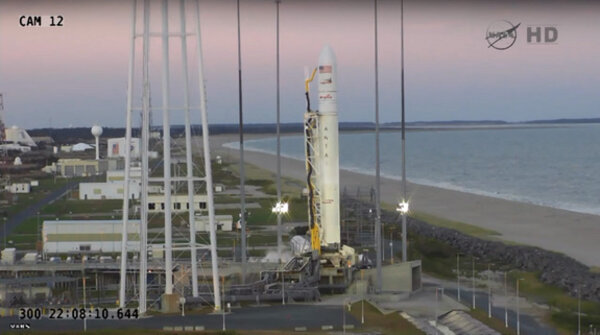 How a stray boat stopped a delivery to the space station
How a stray boat stopped a delivery to the space stationAn unmanned Orbital Sciences launch to the International Space Station was scrubbed just 10 minutes before liftoff, thanks to a boat that wandered into the launch safety range.
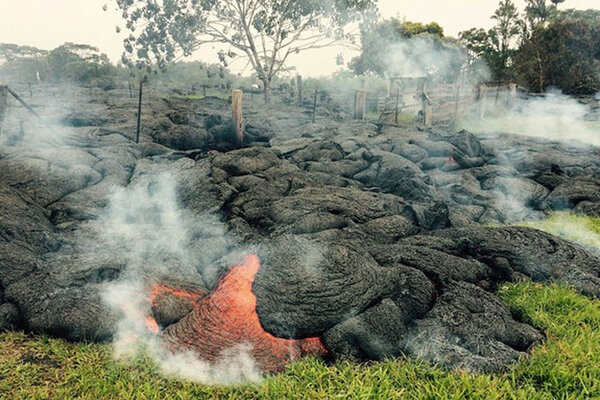 Lava from Hawaii volcano picking up speed, say officials
Lava from Hawaii volcano picking up speed, say officialsA lava flow from Hawaii's Kilauea volcano has picked up speed and is moving northeast at between 15 and 20 miles per hour.
 How to watch Antares rocket launch tonight – and also see space station
How to watch Antares rocket launch tonight – and also see space stationPeople from the Carolinas to southeastern Massachusetts may be able to see portions of the ascent of Orbital's Antares resupply rocket. Orbital's cargo capsule, Cygnus, is headed for a rendezvous with the space station.
- Will the machines take over? Why Elon Musk thinks so.
When one of the most prevalent technological pioneers worries about artificial intelligence, the world listens.
 Monster solar flare: Why is the sun acting up now?
Monster solar flare: Why is the sun acting up now?The biggest sunspot in decades has unleashed a major solar flare, the fourth eruption of its kind in less than a week.
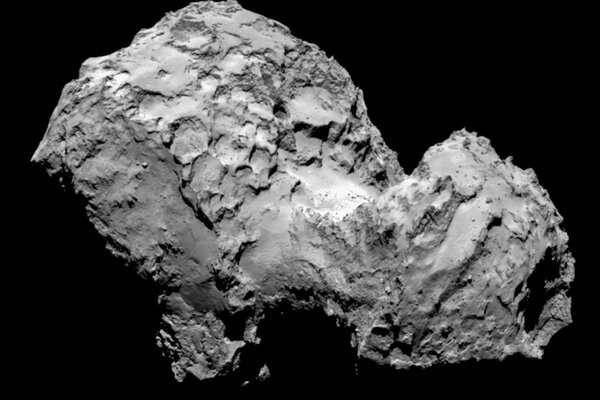 Why do comets smell so bad?
Why do comets smell so bad?A European Space Agency probe has detected new molecules in the fumes of comet 67P/C-G, and their cumulative odor not exactly pleasant.
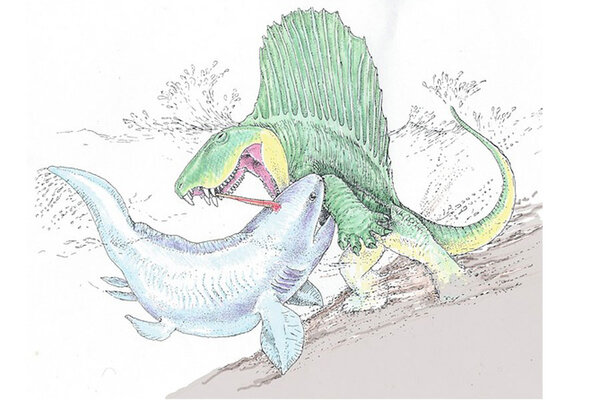 Ancient mammal ancestor devoured sharks, say scientists
Ancient mammal ancestor devoured sharks, say scientistsDimetrodon, the world's largest predator some 290 million years ago, feasted on sharks, an analysis of fossils suggests.
 SpaceX Dragon capsule splashes down in Pacific
SpaceX Dragon capsule splashes down in PacificCarrying almost two tons of cargo, a SpaceX Dragon capsule splashed down west of Baja California, marking an end to the fourth of 12 unmanned deliveries by the company to the International Space Station.
 After a century on ice, a notebook sheds light on an Antarctic disaster
After a century on ice, a notebook sheds light on an Antarctic disasterScientist and photographer George Murray Levick accompanied Captain Robert Scott on his disastrous expedition to Antarctica. Now, after a century locked in ice, Murray's detailed notebook has been found.
- How lava triggers methane explosions in Hawaii
A lava flow on the Big Island of Hawaii had advanced hundreds of yards since Saturday morning and was moving at the rate of about 10 to 15 yards an hour, toward 50-60 homes. The lava flow is setting off methane explosions in its path.
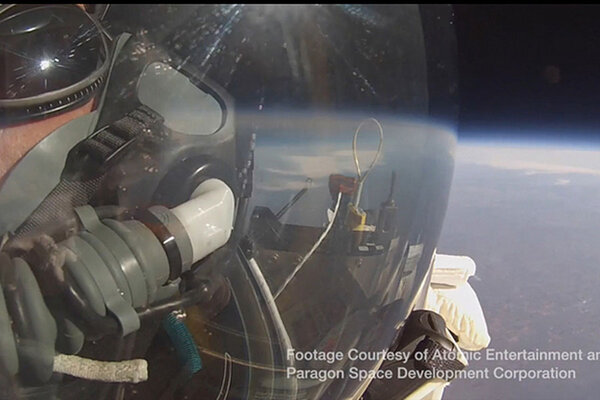 Google exec flings himself from stratosphere, breaks record
Google exec flings himself from stratosphere, breaks recordAlan Eustace, a senior vice president at Google, cut himself loose from a balloon some 25 miles up, parachuting to Earth safely and breaking a record set two years earlier by Austrian daredevil Felix Baumgartner.
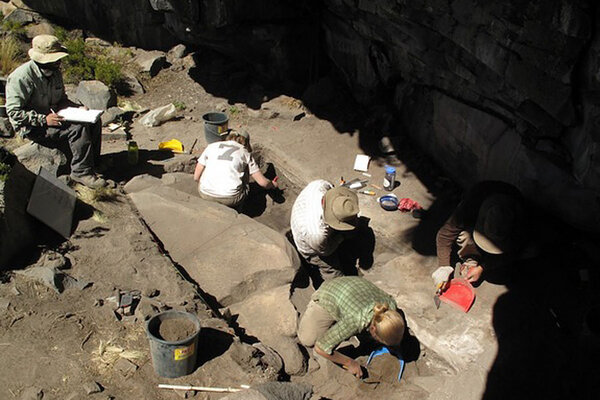 Scientists discover highest Ice Age settlements yet
Scientists discover highest Ice Age settlements yetSome 12,000 years ago, humans were living high up in the Peruvian Andes, say scientists, suggesting that ancient South Americans adapted very quickly to high-altitude living.
 Why did a 60-foot long shark go extinct?
Why did a 60-foot long shark go extinct?The Megalodon, an enormous marine predator, disappeared some 2.6 million years ago, new research finds.
- Photo op: Hubble captures Comet Siding Spring as it buzzes Mars
Comet Siding Spring's close encounter with the fleet of orbiters and rovers at Mars is expected to give scientists their most detailed look yet at an object from the Oort Cloud.
 Will a big solar storm mess with our GPS?
Will a big solar storm mess with our GPS?A huge sunspot is rotating toward the Earth, possibly foreshadowing a geomagnetic storm on our planet.
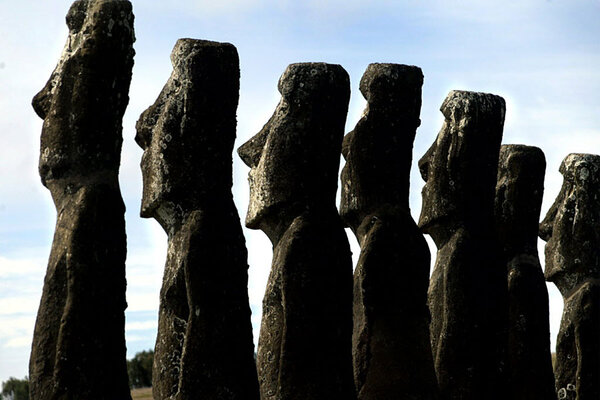 Did ancient Easter Islanders have friends from afar? Yes, say scientists.
Did ancient Easter Islanders have friends from afar? Yes, say scientists.Geneticists found in a new study that ancient inhabitants of Easter Island met and mated with Native Americans long before Westerners arrived.
 Will China be next to send man to the moon?
Will China be next to send man to the moon?China launched a moon orbiter early Friday in preparation for a 2017 mission to collect samples from the lunar surface, but the country's space program would have to combine its lunar exploration and human spaceflight components before executing a manned mission to the moon.
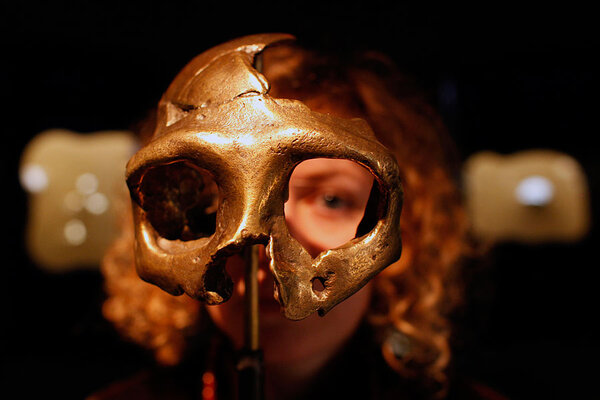 What does a 45,000-year-old femur mean for the Neanderthal in you?
What does a 45,000-year-old femur mean for the Neanderthal in you?A genetic analysis of a 45,000-year-old thigh bone narrows down the time when modern humans and Neanderthals first interbred.
- Artifacts reveal that early humans adapted to very high elevations
Archaeologists have discovered evidence for 12,000-year-old human settlements in the Andes at more than 14,200 feet above sea level. The sites are higher than any human settlement from the same period anywhere in the world.



















